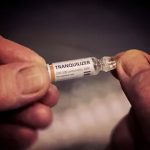 A drug that may be used to reduce anxiety and tension. Major tranquilizers are generally used for treatment of psychoses (aka antipsychotic drugs). Minor tranquilizers are prescribed for reduction of anxiety, irritability.
A drug that may be used to reduce anxiety and tension. Major tranquilizers are generally used for treatment of psychoses (aka antipsychotic drugs). Minor tranquilizers are prescribed for reduction of anxiety, irritability.
A substance drug used in calming person suffering from nervous tension or anxiety.
Has relaxing and sedative properties.
A medication that decreases anxiety and agitation. Preferred terms are anxiolytics and antipsychotics.
A group of drugs that produce a calming effect without resulting in drowsiness or sleep are further classified as major and minor.
Depressant drugs developed to treat anxiety, panic attacks, and insomnia.
Drug that produces a calming effect, lessening anxiety and tension. Most tranquilizers induce drowsiness and can cause dependence.
A major class of drugs used to relieve anxiety and tension, ranging from benzodiazepines to neuroleptics.
A drug that produces a calming effect, relieving anxiety and tension. Major tranquilizers, such as the phenothiazines (e.g. chlorpromazine, and trifluoperazine) and haloperidol, are used to treat severe mental disorders (psychoses), including schizophrenia and mania. Minor tranquilizers, such as the benzodiazepines (e.g. chordiazepoxide and diazepam) and ‘meprobamate, are used to treat neuroses and to relieve anxiety and tension due to various causes. Some drowsiness and dizziness are side-effects of most tranquilizers, and abnormal muscle action and movements sometimes occur with major tranquilizers at high doses. Minor tranquilizers sometimes cause dependence with prolonged use.
A drug that reduces tension, agitation, hyperactivity, and anxiety. The minor tranquilizers include antihistamines (e.g., hydroxyzine), buspirone, and benzodiazepines (e.g., diazepam or alprazolam). The benzodiazepines decrease anxiety, provide sedation, and may cause dependence, tolerance, or addiction. The major tranquilizers include neuroleptic drugs such as haloperidol, fluphenazine, or risperidone. They are used to treat psychotic symptoms, such as delusions, hallucinations, and catatonia, and to manage psychotic disorders, such as schizophrenia. A prominent delayed side effect of many neuroleptic agents is the movement disorder known as tardive dyskinesia.
A type of depressant that slows nerve activity, relaxes muscle tension, lowers alertness, and causes drowsiness; an anti-anxiety drug.
A therapeutic substance possessing tranquilizing properties, prescribed for the management of anxiety and psychological strain.
Various medications that can alleviate stress without leading to significant sedation or depressive effects.
